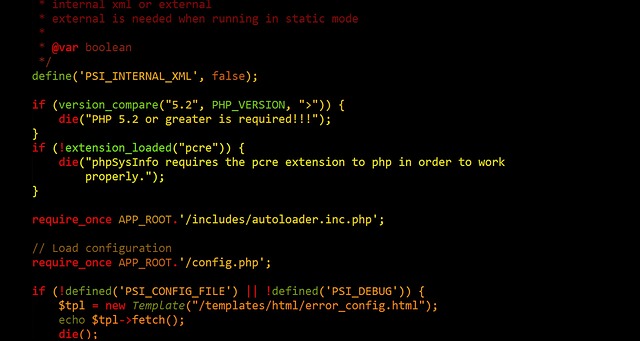What are the parameters to evaluate code quality? How is software developer proficiency assessed? Are there standardized metrics to measure the effectiveness of a coding process? These are critical questions that organizations and tech-teams constantly endeavor to answer, as they strive for excellence and efficiency in the software development life cycle.
Suboptimal code quality and inefficient coding processes are significant issues plaguing the software development industry. According to a study published in the Scientific World Journal, approximately 70% of software projects fail due to lack of quality assurance and poor development practices. These setbacks can produce significant economic impacts – as per an analysis by Systems Sciences Institute at IBM, the cost to fix an error found after product release was 4 to 5 times more as compared to one uncovered during design, and up to 100 times more than one identified in the maintenance phase. Thus, there is strong incentive to improve developer proficiency and evaluation processes within the United States to avoid these considerable expenses.
In this article, you will learn about effective strategies to enhance the quality of coding, innovate the process of code evaluation, and improve overall software developer proficiency. Practical and theoretical methodologies for coding process enhancement will be discussed, with insights on how these can elevate development outcomes and contribute to overall project success.
This guide will also feature an exploration of standardized metrics for evaluating code and assessing developer effectiveness, along with the recommendations for their application within an organization. By the end, reading this piece will enable you to create a robust framework for code evaluation and a thriving culture of quality in software development.

Definitions and Meanings in Evaluating the Quality of Code
Evaluating the Quality of Code refers to the process of examining and determining the standard or excellence of computer programs written by software developers. It measures the extent to which the code meets its intended functionality, its simplicity, and ease of maintenance.
A Guide to Assessing Software Developers means instructions or set of rules that help in gauging the effectiveness and skill level of programmers. It involves measuring technical competence, problem-solving skills, ability to work in a team, efficiency, and creativity among other attributes.
Software Developers are professionals who create computer programs or systems. They are responsible for designing, coding, implementing, testing, and maintaining software to meet user needs and business requirements.
Unveiling the Code Conundrum: Techniques for Quality Assessment in Software Development
Understanding the Need for Evaluating Code Quality
In the world of software development, a developer’s quality of code is tantamount to their professional reputation. The precision, efficiency, and effectiveness of their coding are what set them apart. Evaluating the quality of code is necessary for ensuring optimum performance and productivity. Code is the lifeblood of software and applications, and the quality of the produced code directly affects the software’s functionality, security, and scalability. As such, it plays a significant role in the operational efficiency of companies.
Software developers are expected to write high-quality code that adheres to best practices and conventions. However, they often work under immense pressure and tight deadlines, which might compromise the code quality. Thus, a mechanism to evaluate and ensure code quality becomes indispensable. This alters the focus from simply producing code to writing clean, understandable, and maintainable code, promoting an efficient software development ecosystem.
Proven Metrics to Evaluate Code Quality
Several quantifiable metrics are frequently used to assess the quality of code. These come in handy when you are evaluating the code quality systematically. Let’s delve into these proven metrics:
- Cyclomatic Complexity: This metric measures the number of linearly independent paths through a program’s source code, reflecting on its complexity. High cyclomatic complexity indicates the code might be hard to maintain and prone to errors.
- Lines of Code (LOC): It denotes the length of the code. However, shorter code doesn’t necessarily mean better code. It’s all about striking a balance between achieving functionality with a reasonable amount of code.
- Code Coverage: It measures the extent to which the source code of a program is executed when the program is running. High code coverage ensures most of the code is tested, reducing the risk of bugs and errors.
- Code Duplication: Repeated code increases the risk of errors and makes the code harder to maintain. This metric helps in identifying and reducing duplicated code.
- Coding Standards Compliance: It checks for adherence to coding guidelines and norms. Good compliance means the code is more consistent and easier to understand.
Beyond these metrics, peer code reviews are an intrinsic part of code quality evaluation. They allow for immediate feedback and knowledge sharing, fostering a culture of continuous learning and improvement among software developers. Through code reviews, developers can gain different perspectives on their code, which can lead to better design decisions, bug detection, and overall code improvement. In conclusion, evaluating the code quality is a strategic move towards enhancing software quality and developer productivity.
Beyond the Code: Understanding the Human Factor in Software Developers’ Quality Evaluation
Is High Quality Code an Indicator of Advanced Developer Skills?
Does exceptional code reflect an exemplary coder? Many experts in the field argue for a clear correlation. Essentially, the standard of code produced can give vital insights into a software developer’s competence. Mainly, the quality of code tends to echo the level of both expertise and professionalism of its creator. Precise, clear, and efficient coding is the result of comprehensive knowledge and honed skills. Like a beautifully written book, well-crafted software is easier to comprehend, modify, and debug, reflecting the proficiency of its author. Developers who consistently produce high quality code demonstrate a solid understanding of core programming principles, and are likely to be more skilled and effective in their work.
The Complexity of Measuring Code Quality
Of course, understanding this concept poses a significant challenge to many businesses: how can we define and measure code quality? What factors should we consider? Code quality is multi-dimensional, encompassing various factors beyond simplicity or brevity. It’s about readability, maintainability, efficiency, and more. Even a program that performs the required tasks may exhibit poor quality if it’s unorganized, overly complicated, or difficult to maintain. One must consider lines of code, function points, cyclomatic complexity, code churn, test coverage and other metrics. This makes definitively assessing code quality and subsequently, developer proficiency, a complicated task. Yet, it’s a mission-critical task, as the quality of your software can significantly impact the productivity of your team and the success of your business.
Guidelines for Ensuring Quality Code
Several industry-standard practices can help developers produce high-quality code. Adopting a coding standard is a fundamental step. A well-defined standard or style guide makes the code easier to read and understand, leading to fewer errors and increased maintainability. Regular code reviews are another essential practice. They not only help in spotting and fixing potential issues early but also provide opportunities for team members to learn from each other’s strengths and weaknesses. Leveraging automated testing tools can significantly improve the reliability and robustness of the software being created. Finally, an emphasis on continual learning and improvement will help developers expand their skills, stay abreast of new technologies and paradigms, and continually improve the quality of the code they produce. Whether an organization is building a basic web page or a complex distributed system, nurturing a culture of quality can significantly enhance its ability to deliver effective, efficient, and reliable software.
Cracking the Quality Code: Innovative Metrics for Assessing Software Developers
A Common Misunderstanding
Why is it that a piece of software can look perfect to a developer but confusing to a client? This difference in perception is largely due to the issue of quality in coding – considered a subjective concept by many. For developers, quality may imply functional software, while for clients, it could mean software that not only meets their requirements but is also easy to understand and operate. Oftentimes, this misunderstanding stems from a lack of common language and clear communication between the two parties.
The Heart of the Issue
The crux of the issue has roots in the technical nature of code. It is not merely a medium to write software but it is also a tool to express abstract ideas. Due to its complexity, it becomes challenging to communicate these ideas to the non-technical client. Conversely, without clearly understanding the client’s requirements, developers may produce a code that, while sturdy, does not meet the intended purpose or is difficult for the client to navigate. This divergence in understanding and communication inhibits the development of software that is user-friendly and meets the expectations of the client.
Quality Code: A Bridge between Two Worlds
Let’s consider an example of best practices. Some firms employ ‘code reviewers’, a sort of conduit between the developer and the client. They examine the code from a more holistic perspective, taking into account not just the functionality but also the understandability, efficiency, and readability. Another exemplary practice is the utilization of style guides. These guides provide a set of standards for the writing of consistent and easy to understand code, making it easier for the client to grasp the concept of what the developers are actually doing. Writing detailed yet easy to understand comments within the code is another good practice. This ensures that the client can understand the function of different components of the program. Lastly, regular meetings between the client and the developers can ensure a continuous exchange of ideas and feedback, resulting in software that is up to the mark and easy to use by the client. In essence, quality code can bridge the communication gap between developers and clients by converting complex technical jargon into an easily comprehensible language for the clients.
Conclusion
Could it be that the real measure of good code is not just about it being error-free, but how well it aligns with the overarching expectations? This thought-provoking question lies at the heart of evaluating code quality. Without a solid understanding of these principles, it becomes far too easy to get lost in the contentious debate of what constitutes ‘good’ or ‘bad’ code. Establishing an objective framework that includes factors such as readability, modularity, testability, and efficiency serves to promote healthier, more structured evaluation. Not only does this foster better programming practices but it also multiplies the productivity and harmony within development teams.
On a different note, we would like to extend an open invitation to all our readers. Our regularly updated blog is a treasure trove of resources on software development best practices, technology updates, and insider tips. Each of our articles is meticulously crafted and curated by industry experts. From tutorials for beginners to deep dives into intricate programming constructs, we strive to be your one-stop-shop for all things coding. So, why wait? Dive in and let our blog be your guide through the fascinating world of software development.
Finally, here’s a little heads up. We’ve got some tantalizing new releases coming your way. With the world of technology advancing at an inexhaustible pace, there’s always something new to learn. Be it a groundbreaking programming language, an innovative approach to testing, or fresh perspectives on common development challenges, we’ve got you covered. So, stay tuned, keep learning, keep coding, and wait for new insights that can transform your coding journey. After all, the marvel of software development is in its continual evolution, and we are committed to helping you keep pace.
F.A.Q.
1. What does it mean to evaluate the quality of code?
Evaluating the quality of code refers to the process of assessing and verifying that a software developer’s code is up to standard. It is about checking whether the code reaches the level of quality that is accepted within the organization and satisfies both functional and non-functional requirements.
2. Why is it important to evaluate the quality of a developer’s code?
It is essential to evaluate code quality because it directly impacts the function, readability, and modify-ability of the software. Poor quality code can lead to bugs and technical debts, which can cause problems, slow down the overall development process and cost more in the long term.
3. What are the key areas to look at when evaluating the quality of code?
Key areas to evaluate when determining code quality include correctness (whether the code performs as expected), readability (easiest of understanding the code), efficiency (how well the code uses resources), maintainability (ease of modification), and robustness (how the code handles unexpected conditions).
4. How does this guide help one in effectively assessing the quality of a software developer’s code?
This guide provides a detailed and systematic approach towards code evaluation by providing insights into the critical areas to focus on. Besides, the guide offers practical advice and methods to conduct an effective evaluation process, ensuring that all aspects of code quality are covered.
5. What challenges can one face while evaluating the code quality, and how can the guide help remedy them?
Challenges in code evaluation might include understanding programming languages, determining readability, assessing efficiency, and spotting hidden errors. This guide provides strategies and techniques for overcoming these challenges, primarily aimed at ensuring a thorough and accurate code quality assessment.


